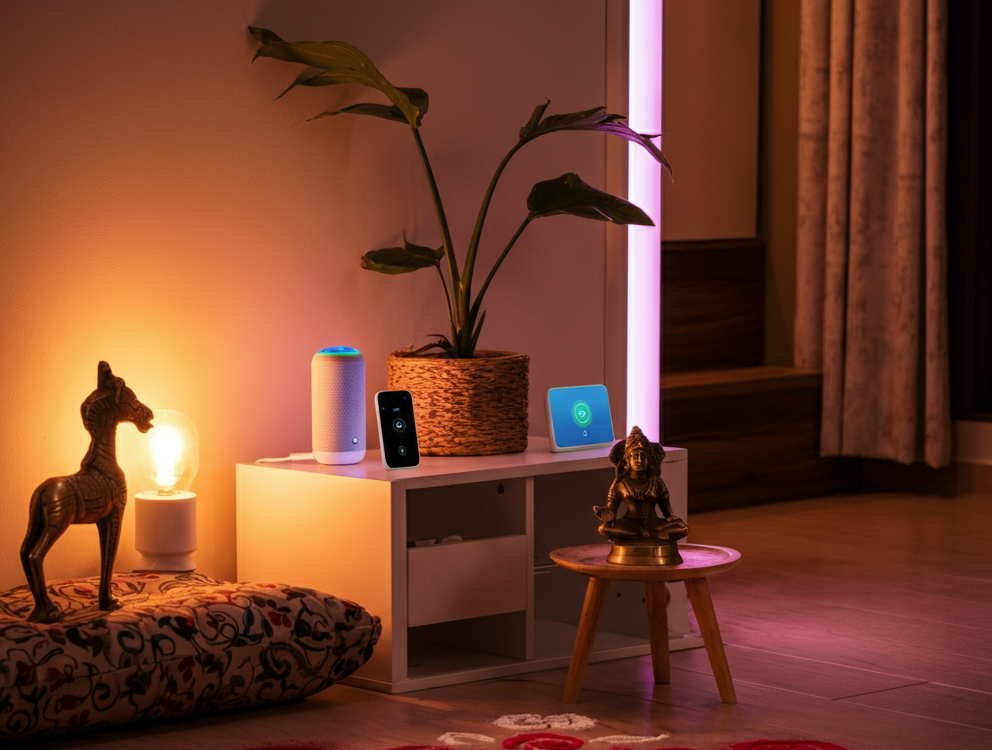The rapid march of artificial intelligence (AI) has brought a surge of innovation to Indian homes, blurring the line between science fiction and daily life. What once felt futuristic—voice-controlled rooms, automated lighting, predictive security—is now a reality for thousands of households across the country. Smart homes using AI in India are opening up new possibilities, not just for the affluent, but for anyone eager to simplify life, enhance security, and live more sustainably.
But how is AI truly shaping Indian homes, and what should families know before jumping on the bandwagon? Drawing on expert opinions, first-hand experiences, and the latest industry data, let’s break down the transformative power of AI in India’s smart home landscape.
Why Are Smart Homes Using AI in India Booming?
According to a 2024 market report by Statista, India’s smart home market is projected to surpass
$6 billion by 2027, growing at a compounded annual rate of 16%. That growth isn’t just fueled by global trends, but also uniquely Indian needs—rising urbanization, increasing concerns around safety, and the desire to save on ever-increasing electricity bills. As Priya Nair, an award-winning Bengaluru architect, says, “Indian families are looking for comfort, but also reliability and peace of mind. AI delivers all three, often without you even noticing it’s there.”
The Everyday Benefits: How AI Transforms Indian Homes
1. Energy Efficiency and Cost Saving
With unpredictable power supply and rising energy costs, Indian families are embracing AI’s ability to
manage energy smartly. Devices like adaptive lighting and learning thermostats cut waste, only drawing power when needed. For instance, a 2023 case study by the Indian Green Building Council showed that homes using AI-powered appliances saved an average of 18% on their annual energy bills. Smart energy management doesn’t just mean lower costs—it’s also a boost in environmental responsibility.
2. Enhanced Security that Learns with You
Urban residents, especially in metros like Mumbai and Delhi, cite safety as a top worry. Enter AI-enabled cameras and sensors. These systems can recognize familiar faces, notify you instantly of intruders, and even learn your daily routines for extra-accurate threat detection. Take gated communities in Mumbai: after installing AI-enabled surveillance combined with biometric access, residents reported a 30% drop in security incidents per a 2023 Smart India Housing Survey. That’s peace of mind that goes beyond traditional locks and alarms.
3. Hyper-Personalized Daily Experiences
The best smart homes using AI in India are opening up new possibilities by making life feel a little more personal. Voice assistants in Hindi, Tamil, or Bengali remember your favorite playlists and set reminders for prayer times or family events. Health monitors built into smart mattresses help urban dwellers combat pollution-related sleep issues—vital for cities like Delhi, where poor air quality often disrupts rest. “My AI-powered air purifier sends me quick alerts on my phone when particulate levels spike. For a working parent, that’s a game-changer,” shares Radhika Shah, a Delhi resident and early smart home adopter.
4. Seamless Automation and Everyday Convenience
Think of waking up to curtains that draw themselves open, or coffee brewed the moment your phone alarm rings. With AI, mundane routines are automated—lights, appliances, and even irrigation systems can be managed from anywhere. These real-world conveniences save precious time for busy Indian families, freeing them up for what matters most.
The Challenges of AI in Indian Homes—and Practical Solutions
No technology adoption is without its bumps, and smart homes using AI in India are no exception. Here’s what keeps homeowners wary, and how the industry is responding:
- High Initial Costs: Smart homes may sound expensive, but that’s changing fast. Major Indian brands and startups are rolling out modular, entry-level products (smart plugs, bulbs under ₹1,000), so you can start small.
- Data Privacy: More connectivity brings more risk. The best brands are investing in end-to-end encryption, frequent security updates, and compliance with the Data Protection Bill, 2023. Always choose certified, BIS-marked devices.
- Connectivity Hiccups: Patchy internet? Devices with Zigbee, Bluetooth, or strong offline functionality help maintain core features—even during outages.
- Compatibility Confusion: With so many brands jostling for space, not everything works together. Choosing systems compliant with universal standards like Matter ensures your devices play nice with each other.
The good news? Each of these hurdles is actively being addressed. As Dr. Arjun Rao, a leading AI developer with Tata Digital, puts it: “The Indian market is unique, and solutions here are becoming uniquely Indian—affordable, robust, and flexible.”
Real-Life Examples: AI-Powered Smart Homes in Action
- Jaipur’s Green Homes: In Rajasthan’s capital, solar-powered residences combine rooftop panels with AI-based energy management. The result? Households report fewer outages and up to 20% lower bills, according to a 2024 Rajasthan Renewable Energy survey.
- Smart Safety in Mumbai: Apartment complexes adopt AI fingerprint entry and cloud surveillance, offering panic-buttons on mobile apps for instant help—features praised by both residents and local police.
- Remote Innovation in Kerala: Progressive farmers use AI to track both home comfort and crop cycles, integrating weather data and soil sensors with their home automation for better yields and smarter living. Rural Kerala now hosts workshops for neighbors eager to follow suit.
These stories aren’t isolated—they reflect a nationwide trend of local innovation. From city dwellers to rural families, more people are warming up to AI for its tangible day-to-day benefits.
The Next Wave: Future Trends for Smart Homes Using AI in India
- Hyper-Personalization: AI will know if you prefer warm light in the evenings or a chilly bedroom at bedtime, adapting in real-time based on observed patterns.
- Smart Cities Integration: Upcoming urban initiatives connect homes with municipal systems—managing waste, water, and even local traffic flow from your doorstep. The Ministry of Housing & Urban Affairs projects that by 2030, 40% of smart city functions will be AI-managed.
- Sustainability and Self-Sufficiency: Expect more homes fitted out with AI-assisted rainwater harvesting, solar storage, and intelligent waste segregation, all working toward a greener footprint.
- Inclusive Technology: Leading brands now design for regional languages, voice accessibility, and neurodiverse users—making AI-driven living accessible for every Indian household.
As Priya Nair puts it, “The perfect smart home isn’t built overnight. But step by step, families see results—and that’s why AI-powered homes are here to stay.”
Conclusion: Opening the Door to a Smarter Future
At its core, the movement toward smart homes using AI in India is about
empowerment. From cost savings and energy efficiency to unmatched convenience and safety, AI-driven technologies are improving lives—one home at a time. As solutions become more localized, affordable, and culturally attuned, the barriers are lowering for everyone.
Whether you’re ready to invest in a full-home overhaul or take your first step with an entry-level gadget, now is the right time to explore the
new possibilities smart homes and AI have to offer in India. The future is already arriving at your doorstep.
Curious about upgrading your living space? Start your smart home journey today—compare products, read user reviews, and consult experts for tailored advice. After all, a smarter, safer, and more comfortable home is just a click away.



